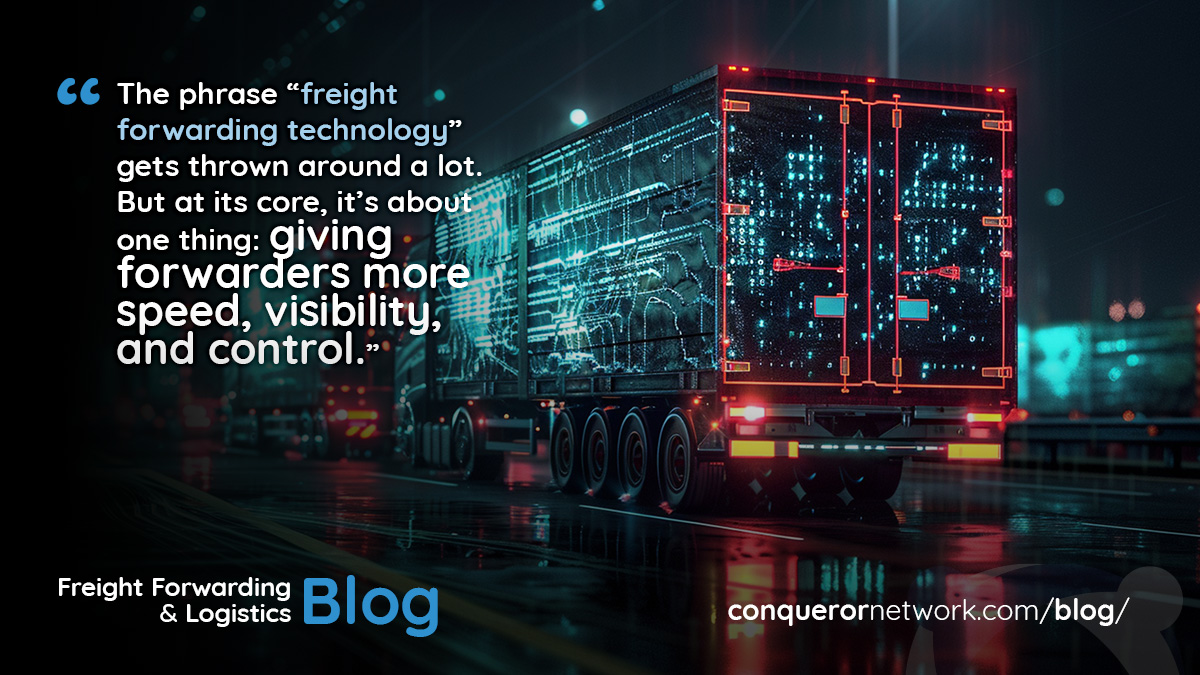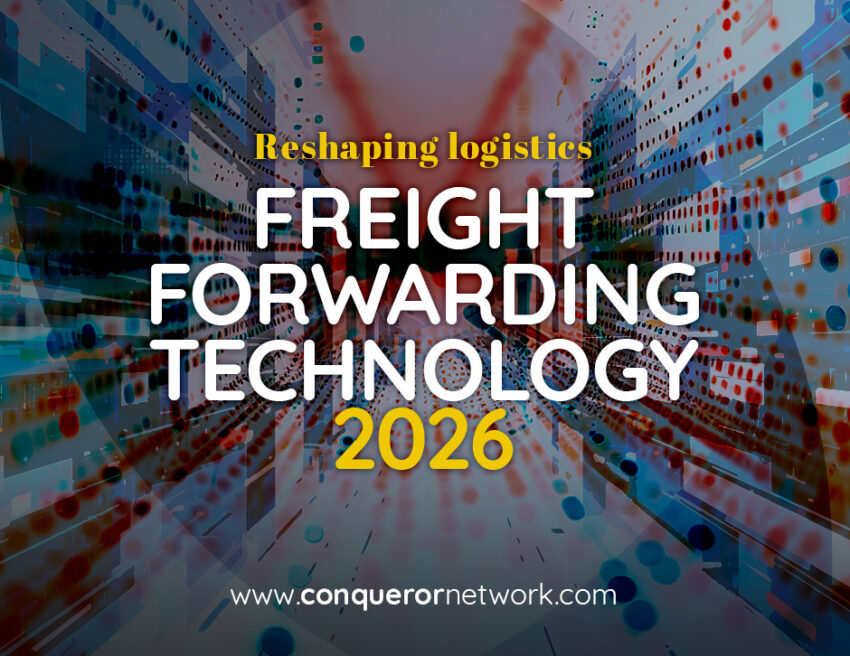If you’re a freight forwarder, you’ve probably asked yourself a few big questions recently. Which technologies should I actually care about? Which ones are hype? And, most importantly, what will my business look like in 2026 if I don’t adapt now?
The logistics industry has always been shaped by ships, planes, and ports. But today, it’s being shaped just as much by code, algorithms, and data. The decisions you make in the next two years about digital tools, automation, and new ways of working could decide whether you stay competitive or get left behind.
So let’s break down the freight forwarding technology bets that actually matter. Not the buzzwords that will fade away, but the innovations that will change how forwarders quote, book, track, and deliver by 2026.

Freight forwarding technology that matters now
The phrase “freight forwarding technology” gets thrown around a lot. But at its core, it’s about one thing: giving forwarders more speed, visibility, and control. Customers expect instant responses, reliable tracking, and cost transparency. You can’t deliver that with paper-based processes or outdated spreadsheets.
The most impactful technologies right now include:
-
AI-driven analytics that can predict demand, rates, and disruptions.
-
Automation in operations, from booking to billing, cutting down repetitive tasks.
-
Cloud-based freight management systems that allow teams across the globe to work in sync.
These aren’t futuristic, they’re here already. But their adoption is uneven, which means forwarders who embrace them now will have a real edge by 2026.
Artificial intelligence: From buzzword to backbone
AI has been hyped for years, but it’s finally moving into the backbone of freight forwarding. Instead of just analyzing historical data, AI tools are starting to forecast port congestion, spot anomalies in shipments, and even suggest optimal trade lanes.
By 2026, forwarders who rely on AI-powered systems won’t just be faster they’ll also be more resilient. When a disruption hits, AI can flag alternatives before the problem snowballs. For small and mid-sized forwarders, this means the ability to compete with big players who’ve long had advanced forecasting teams.
Blockchain and trust in global trade
Blockchain was once dismissed as a tech gimmick. But in freight forwarding, its real value lies in trust and transparency. By 2026, we can expect blockchain-enabled platforms to be more common for:
-
Smart contracts that cut down on paperwork.
-
Secure records of shipments and payments.
-
Reducing disputes over cargo damage or delays.
This doesn’t mean every forwarder needs to dive into blockchain tomorrow. But keeping an eye on where it’s being applied and being ready to plug into trusted platforms will be crucial.
IoT and real-time visibility
Customers don’t just want to know where their cargo is. They want to know how it’s doing. That’s where the Internet of Things (IoT) comes in. Sensors attached to containers can track temperature, humidity, shocks, and location in real time.
By 2026, this will be standard for sensitive cargo like pharmaceuticals, food, and electronics. Forwarders who build partnerships with IoT-enabled carriers and warehouses will stand out as reliable partners for clients with high-value shipments.
Conqueror Freight Network and the power of FreightViewer
Giving forwarders a digital edge
Technology isn’t just about predicting the future, it’s about being able to act faster today. That’s where Conqueror Freight Network’s exclusive FreightViewer software comes in.
FreightViewer allows members to generate instant online quotes, compare rates, and manage shipments in one platform. For independent forwarders, this levels the playing field. Instead of waiting hours or days to prepare a quote, members can provide clients with immediate responses—matching the speed of the digital-first giants.
By 2026, instant quoting and digital customer interactions will be the baseline. Forwarders without tools like FreightViewer will struggle to meet client expectations. Being part of a network that invests in freight forwarding technology today ensures members aren’t scrambling to catch up tomorrow.
Sustainability tech and carbon tracking
The other freight forwarding technology to watch is carbon visibility. As regulations tighten and shippers demand greener options, forwarders will need tools that track and report emissions at shipment level. By 2026, customers may choose forwarders not just by price and speed but also by their ability to offer low-carbon routes and verified sustainability reports. Software that integrates carbon calculators directly into booking systems will be vital.
Cybersecurity: The overlooked innovation
It’s not flashy, but it’s critical. As forwarders go digital, cyberattacks become a bigger risk. A hacked system can mean stolen client data, halted operations, or even ransom demands. By 2026, cybersecurity won’t be an afterthought it will be part of every freight forwarding technology decision. Forwarders will need to ensure their platforms, emails, and customer portals are secured with the same seriousness as banks or healthcare companies. Trust is currency, and one breach can undo years of hard work.
Talent and training: The human side of tech
Here’s something people forget: adopting freight forwarding technology isn’t just about installing software. It’s about people. By 2026, the forwarders who thrive will be the ones who combine digital tools with skilled teams who know how to use them. Investing in staff training, hiring tech-savvy talent, and building a culture that embraces change will be just as important as buying the latest platform. The forwarder who can blend human expertise with digital speed will be unbeatable.
Looking ahead: The 2026 landscape
So what does this all add up to? By 2026, freight forwarders who embrace technology will:
-
Quote faster than their competitors.
-
Offer real-time visibility and carbon data to customers.
-
Be resilient against disruptions thanks to AI forecasting.
-
Build trust through secure, transparent systems.
Those who stick to manual processes will find themselves squeezed out, unable to match client expectations or industry standards.
The real question is: do you want to be scrambling in 2026, or do you want to already be ahead of the curve?
Final thoughts
Freight forwarding technology isn’t just about gadgets and platforms—it’s about survival. AI, blockchain, IoT, and carbon tracking will reshape logistics in the next few years. Tools like Conqueror’s FreightViewer show that digital transformation isn’t reserved for the giants; independent forwarders can step up right now.
The smart bets are clear. The only uncertainty is whether forwarders will move fast enough to make them.


